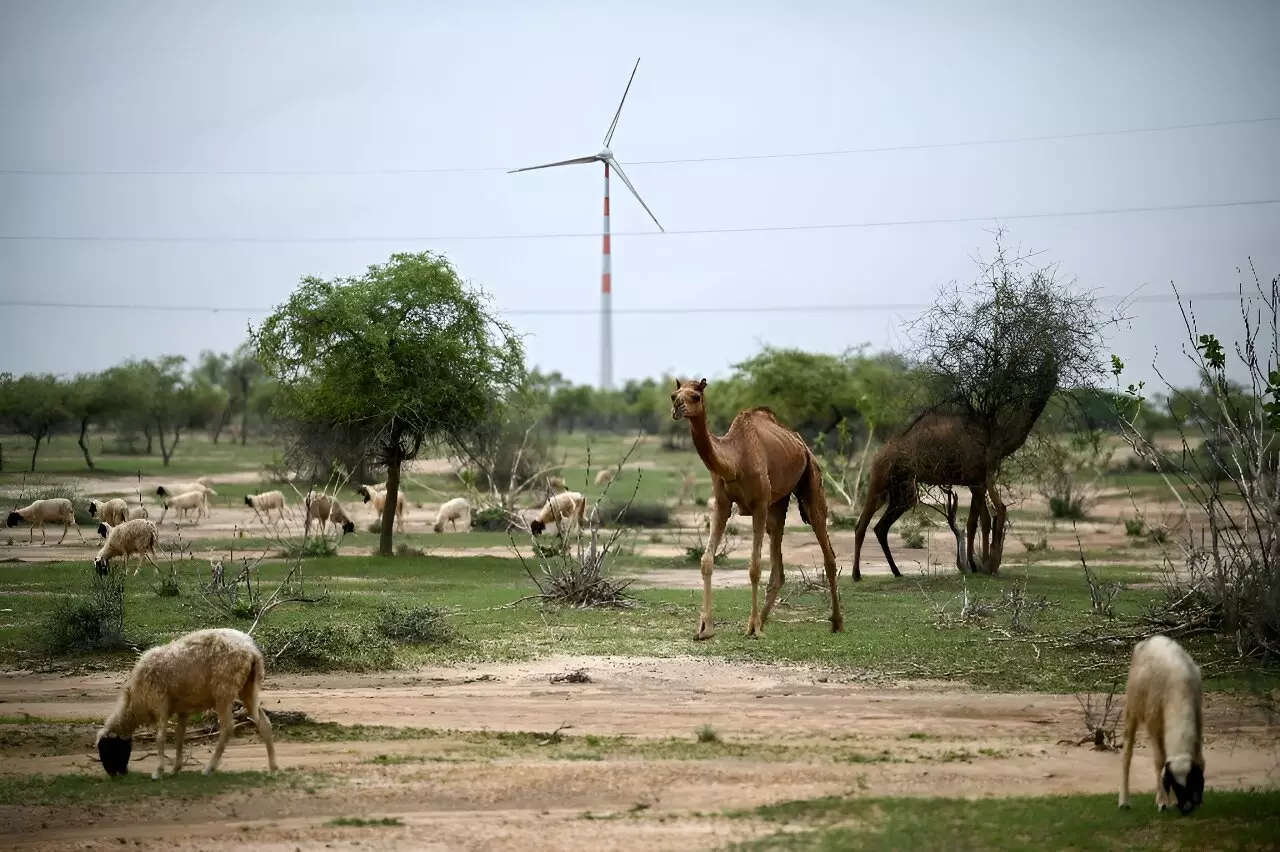The Thar Desert in India stands as a testament to the country’s ambition in renewable energy, powered by a multitude of wind turbines that promise to contribute to the nation’s growing demand for clean energy. This drive comes against the backdrop of India being the world’s third-largest emitter of greenhouse gases and aims to mitigate the escalating effects of climate change. However, as windmills dot the scenic landscape of this arid region, local herders and farmers articulate a profound sense of loss and frustration. Their struggle highlights a disconcerting reality—progress in renewable energy provisions is frequently traded off against the well-being of marginalized communities.
Residents living under the shadow of massive wind turbines have expressed growing resentment towards the corporations responsible for these constructions. For example, Nena Ram, a 65-year-old herder, articulates the plight of his community: “The big companies have come here and built the windmills, but they’re useless to us.” His sentiments reflect a broader concern that corporate advances in renewable energy seem to neglect the needs and rights of local populations. While the government asserts that these initiatives are essential for a sustainable future, for many locals, it appears that their traditional livelihoods—based predominantly on livestock grazing—are being sacrificed.
The adverse impacts reported by locals are manifold. In the western Rajasthan state, grazing lands crucial for camels, cattle, and goats have diminished due to the placement of turbines. Additionally, sacred groves known as “orans,” which have historically collected water essential for livestock, have suffered degradation. Heavy construction vehicles have compounded these issues, wreaking havoc on water resources and expediting the desert’s desiccation.
The plight of farmers like Nena Ram underscores the dual impact of climate change and counteractive measures. While they find themselves grappling with extreme heat waves and prolonged droughts—exacerbated by climate change—further hurdles arise from the very solutions intended to rescue the environment. These individuals contribute considerably less to greenhouse gas emissions compared to large industrial sectors, yet they bear the consequences of both climate change and the strategies meant to combat it.
The rapidly expanding wind farms in the Jaisalmer district are hailed as significant steps toward India’s renewable energy goals, giving rise to the misconception that these endeavors uniformly benefit all. With an ambitious target of reaching 500 gigawatts (GW) of non-fossil fuel power capacity by 2030, the need for vast land resources naturally comes into play. However, this development blurs the lines of equity. Residents express frustration that while energy production surges, they continue to suffer from sporadic power cuts, sometimes enduring prolonged periods without electricity. Local activist Sumer Singh Bhati poignantly describes their plight: “We are leading our lives in darkness.”
The consequences of building these wind farms go beyond the socioeconomic fabric of local life. They threaten the ecological integrity of a region that is rich in biodiversity, home to species like the critically endangered Great Indian Bustard. This spectacular bird’s population has plunged dramatically—a fact correlated with the rise of wind turbines and power lines which disrupt their habitat. Activist Parth Jagani notes the peril of bird mortality as an ever-increasing concern post-installation of windmills and overhead wires. The subsequent decision by the Supreme Court to mandate the underground placement of power lines in crucial breeding zones was an attempt to mitigate such threats; yet, under governmental pressure, this ruling was rescinded, once again putting immediate energy demands before environmental considerations.
As India forges ahead with renewable energy projects, a crucial conversation must address the underlying costs borne by local communities. Balancing the pressing need for sustainable energy with the rights and needs of those inhabiting these areas is vital. Clear communication, community engagement, and genuine investment in local livelihoods, in addition to environmental protections, are key to avoiding the trap of sacrifice on the altar of progress.
The narrative surrounding India’s wind energy efforts in the Thar Desert reflects a pressing dilemma. Without concerted actions that prioritize the voices of local farmers and herders, attempting to rectify the imbalances will remain an uphill battle. Progress in renewable energy must embrace inclusivity and sustainability, or else it risks outpacing the communities it aims to help while sending the message that environmental necessity can sometimes overshadow human need.

